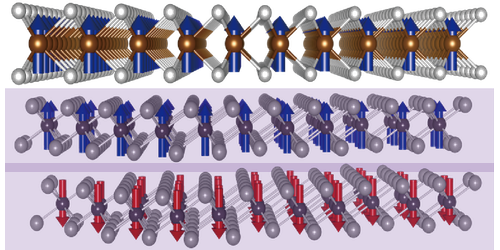Electrical Control of the “Valley”
The future of data encoding may lie with a new paradigm known as valleytronics. While traditional electronic devices manipulate the charge of electrons, those that use valleytronics employ the electrons’ orbital angular momentum. In a new study, Kin Fai Mak of Cornell University and colleagues report achieving such control via electrical inputs, an elusive goal deemed essential for high-speed, low-cost devices [1].
The “valley” in valleytronics refers to two dips that appear in plots of a solid’s energy bands at different electron momenta. By putting all the electrons into one valley or the other, those two dips could be used to represent the two values of bits (0 and 1) in information applications. While this “valley sorting” is unresponsive to electrical fields, it can be influenced by changes in ambient magnetism. Mak and collaborators found a way to control the valley populations in one material by electrically manipulating the magnetism of an adjacent material.
The team laid a single-atom-thick sheet of the semiconductor tungsten diselenide ( WSe2), a material whose energy landscape has valleys, atop a few atomic layers of chromium triiodide ( CrI3), a material whose magnetism can be electrically altered. They then changed the voltage across the CrI3 layers and measured the population of the WSe2 valleys using a technique that monitored the spin direction of light that the WSe2 emitted when illuminated by a laser. They found that the direction changed when the voltage was applied, indicating a switch in the semiconductor’s filled valley. The CrI3 layer is magnetic only at around 60 K, so the team says that their next step is to find a material that would allow valley sorting at room temperature.
–Christopher Crockett
Christopher Crockett is a freelance writer based in Arlington, Virginia.
References
- L. Li et al., “Electrical switching of valley polarization in monolayer semiconductors,” Phys. Rev. Materials 4, 104005 (2020).




